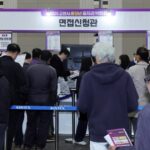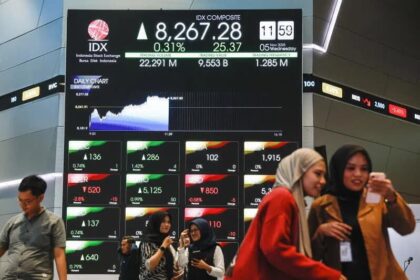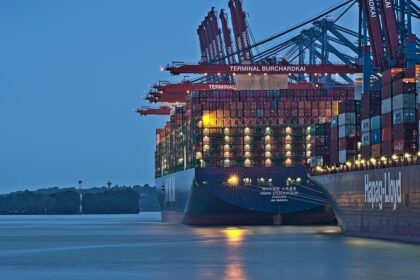Why Singapore is pressing for an ASEAN EU digital economy pact
Singapore is urging Southeast Asia and Europe to move from scattered pilot projects to a structured digital economy pact. The aim is to keep trade open, predictable and anchored in a rules based system at a time when protectionism, export controls and diverging tech standards are adding friction to cross border business. That was the message from Deputy Prime Minister and Trade Minister Gan Kim Yong, who used the Singapore FinTech Festival to call for fresh momentum behind ASEAN European Union digital cooperation.
Gan framed the proposal as practical and incremental. He made clear that ASEAN and the EU would remain separate regional projects, yet could still build a common rulebook for the digital economy. He said the two sides should start with the basics, then widen the scope when trust and experience grow.
Introducing his push for a joint discussion on an agreement, Gan argued that a formal track could unlock a step change in trade. He said this would matter for a region where online commerce is now a core growth engine. Southeast Asia’s digital economy is above 300 billion dollars in gross merchandise value in 2025, and it continues to expand in payments, ecommerce, content, logistics and fintech. He also pointed to the need to modernize the World Trade Organization (WTO) and to keep building bridges with other partners, including the Gulf Cooperation Council (GCC) and the Comprehensive and Progressive Agreement for Trans Pacific Partnership (CPTPP). The CPTPP is a free trade agreement among 11 countries formed after the United States withdrew from the Trans Pacific Partnership.
Speaking to the audience, the Deputy Prime Minister underlined the upside of starting talks between the regions.
“If the EU and ASEAN can come together to discuss a digital economic agreement, it would be a major breakthrough.”
What a digital economy pact could cover
A digital economy agreement sets common rules for how data, services and digital products move across borders. It gives businesses a predictable framework for things like electronic contracts and signatures, digital invoicing, identity verification, data transfers, cloud services, cyber security, online consumer protection and competition rules for platforms. The aim is to reduce compliance costs, speed up transactions and raise trust in cross border digital trade.
Data flows, privacy and trust
The hardest issues often involve the movement and protection of personal and business data. The EU’s privacy regime is centered on the General Data Protection Regulation (GDPR), while ASEAN economies run a mix of national laws with different levels of stringency. An ASEAN EU pact would need a set of trusted data transfer rules, with workable legal bases for processing and transfer, clear accountability for data handlers and avenues for redress when things go wrong.
There are ways to bridge differences without lowering standards. Governments can recognize each other’s safeguards, define transfer mechanisms that meet both sides’ laws and set out sector specific arrangements for finance or health data. Firms benefit when the rules are clear, interoperable and stable. If ASEAN and the EU can agree on baseline trust measures, the cost of data compliance for exporters and startups could drop sharply.
Payments, identity and smoother trade at the border
Payments and identity systems are the plumbing of digital trade. Interoperability lets a tourist pay by scanning a quick response code in another market or a small seller in Hanoi receive funds from a buyer in Berlin as easily as a local transaction. Mutual recognition of digital identity and electronic signatures speeds up account opening, financing and licensing, and lowers fraud risk. Shared rules for ecommerce logistics and digital customs processes, like paperless trade and einvoicing, cut clearance times and reduce errors.
Cyber security and online consumer protection are the other pillars. Aligning risk management standards, reporting duties and response playbooks makes it easier for companies to comply and for regulators to cooperate during incidents. Common rules on transparency in online platforms and fair treatment of users improve consumer confidence and create a level playing field.
ASEAN’s digital agenda is maturing
ASEAN members are negotiating the ASEAN Digital Economy Framework Agreement (DEFA), a region wide pact that would align rules for digital trade, data, payments, cyber security, digital identity and consumer protection. With the region’s digital economy projected to approach 2 trillion dollars by 2030, DEFA is the anchor for a more integrated Southeast Asian digital market. It is designed to be ambitious, yet flexible so that countries with different starting points can participate and benefit.
Practical cooperation is also advancing. The ASEAN Digital Index (ADIX) project, developed with support from the European Union through the Enhanced Regional EU ASEAN Dialogue Instrument, helps countries measure progress in areas like connectivity, public services and digital skills. An ADIX workshop in May 2025 reviewed lessons from the first version and scoped indicators for ADIX 2.0, with a focus on stronger statistical methods and better inter agency coordination. Shared metrics help policy makers target investments and identify gaps that hold back inclusion.
Beyond measurement, ASEAN and the EU have been holding joint activities on digital trade and supply chain resilience. Workshops hosted in Singapore in August 2025 brought together officials, businesses and experts to compare regulatory approaches and highlight where convergence is possible, including cross border data flows, cybersecurity, digital identities and online consumer protection. In parallel, the EU’s Global Gateway program is funding connectivity and infrastructure projects across the region. During their June 2025 Joint Cooperation Committee meeting, both sides reviewed progress under the ASEAN EU Plan of Action for 2023 to 2027 and reaffirmed support for a transparent, sustainable and rules based trading system.
After that high level meeting, the two sides issued a joint message that put economic cooperation, including the digital economy, at the center of their partnership.
“Both sides reaffirmed their commitment to strengthening the rules based multilateral system and to advancing cooperation on digital trade, green technologies and supply chain resilience.”
Where ASEAN and the EU align, and where they differ
Both regions want growth, secure data, resilient supply chains and a fair environment for small and large firms. They diverge in how they regulate. The EU relies on comprehensive, binding rules such as GDPR and new platform regulations, while ASEAN has a patchwork of national laws with different scopes and enforcement capacities. Some economies maintain data localization requirements, and there is a wide range of approaches to online content and platform responsibility.
Bridging those differences does not require a grand bargain on day one. A realistic first step is a principles based framework with baseline commitments on data transfers, privacy safeguards, cyber security cooperation and electronic transactions. Sector annexes for finance, manufacturing and logistics could come later. A mutual recognition pathway can reward countries that meet higher standards without excluding those still building capacity. The recent deepening of EU Singapore digital ties provides an early template that ASEAN and the EU can study, refine and scale.
Singapore’s pitch, trust and the WTO moment
Singapore’s case rests on credibility. The country built a reputation in physical trade by keeping ports open, honoring contracts and maintaining a stable legal environment. It is now applying the same approach to digital commerce and finance. The Monetary Authority of Singapore has set out early rules for stablecoins, runs regulatory sandboxes and pilots, and works with partners on cross border experiments like tokenized assets under Project Guardian and retail infrastructure trials under Project Orchid. The aim is to prove what works, then scale with partners through interoperable standards.
Gan also linked regional digital work with the need to update global rules. He said the WTO must be transformed so it can address current challenges, yet he described it as an essential foundation for fair trade. His message was that new regional pacts and modernized multilateral rules can reinforce each other when they are anchored in open markets and predictable enforcement.
In a separate point, he said ASEAN should keep building ties with groups such as the GCC and the CPTPP to drive trade and investment. He noted that there are still many opportunities even as the external environment turns more uncertain.
On the potential of EU ASEAN digital talks, Gan captured both the ambition and the realism behind Singapore’s push.
“We will start with collaboration on the digital economy and basic rules before considering further steps.”
What a pact would deliver for companies and consumers
For businesses, the value of a digital economy pact shows up in faster onboarding, smoother payments, fewer forms, and lower legal risk when selling across borders. For consumers, it means better protections, more cross border choices and safer use of digital services. For governments, it offers stronger cooperation against cyber attacks and fraud, and better tools to keep supply chains moving during crises.
- Trusted cross border data flows with clear legal bases and safeguards, reducing compliance uncertainty for exporters, banks and cloud providers.
- Recognition of digital identities and electronic signatures across markets, speeding up account opening, trade finance, licensing and public services for firms and individuals.
- Interoperable payments, including instant transfers and QR acceptance, cutting the cost of remittances and cross border purchases.
- Paperless trade and einvoicing that shorten customs clearance, reduce errors and improve traceability in supply chains.
- Aligned cyber security risk management and incident reporting to strengthen resilience and joint response.
- Clearer online consumer protection rules that raise confidence in cross border shopping and services.
- Capacity building tools such as the ASEAN Digital Index to guide investment and policy where gaps are largest, especially for micro, small and medium enterprises.
The Bottom Line
- Singapore is urging ASEAN and the EU to start talks on a digital economy agreement to keep trade open and rules based.
- Gan Kim Yong said a discussion between the regions would be a major breakthrough, with a first phase focused on basic digital rules.
- Southeast Asia’s digital economy is above 300 billion dollars in 2025 and could reach around 2 trillion dollars by 2030.
- ASEAN is negotiating DEFA, while EU ASEAN cooperation includes ADIX and joint workshops on digital trade and supply chain resilience.
- The ASEAN EU Joint Cooperation Committee reaffirmed support for a transparent, sustainable, rules based multilateral trading system.
- Key areas for any pact include data transfers, privacy, payments, digital identity, cyber security, consumer protection and paperless trade.
- Singapore sees a role as a digital trust hub and also backs WTO reform to update global trade rules.
- A pact could lower compliance costs for firms, expand consumer choice and build stronger defenses against cyber risks.












